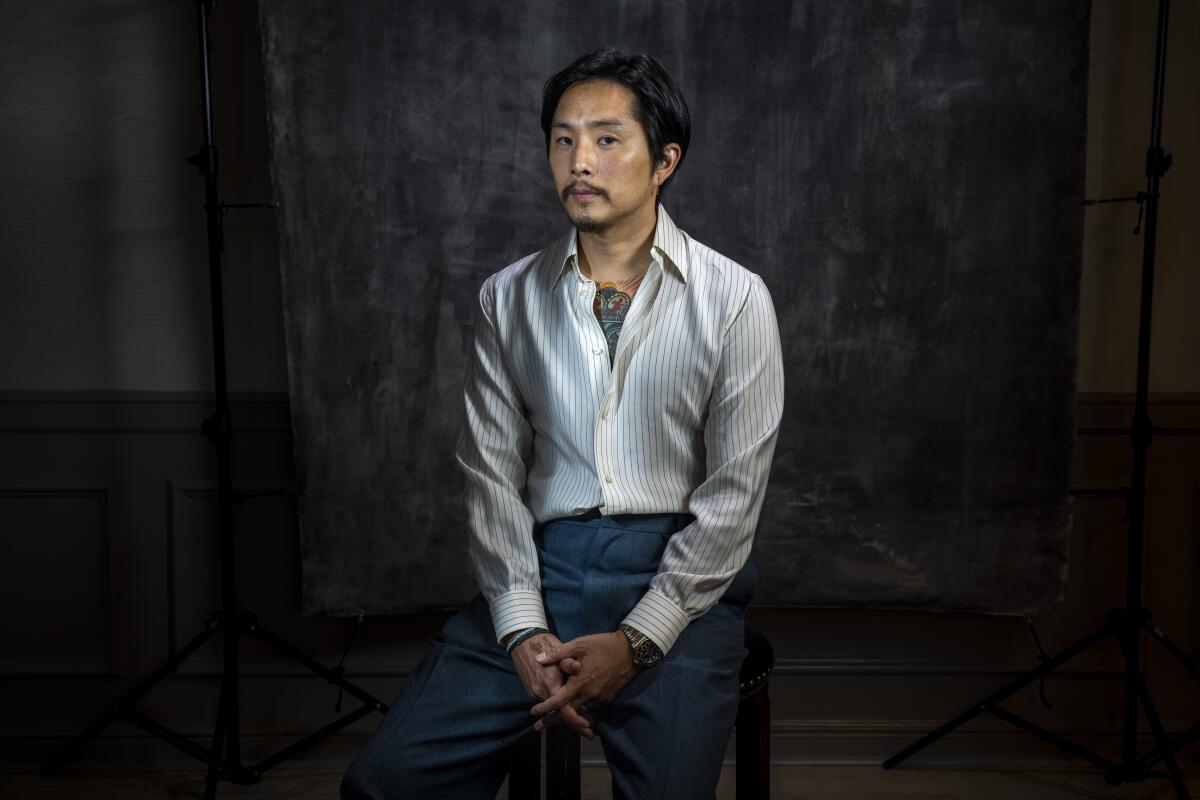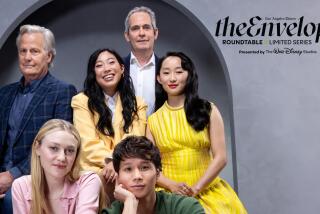Justin Chon illuminates questions of identity and horrors of deporting adoptees

- Share via
“Where are you from?” is the question that opens the New Orleans-set drama “Blue Bayou,” and for Korean American director Justin Chon, it’s the source of a complicated reckoning with identity and belonging. “Anyone who is ethnic can completely relate to being asked that question,” Chon says, speaking from Hawaii, where he’s editing a new film.
Chon grew up in Southern California, but in the September release “Blue Bayou,” he adopts a Louisiana accent to play Antonio LeBlanc, a struggling tattoo artist who was adopted from Korea as a young child. In the process of building a family with his pregnant wife (Alicia Vikander) and her daughter, Antonio is caught in a web that leads to potential deportation from the only country he’s ever called home.
In this devastating drama, Chon shines a light on the complexities and horrors of the U.S. immigration system, while also continuing to explore the contours of Asian American identity.
You decided to cast yourself in the lead role. I’m curious why it was important to you to play this role and what you got out of that experience.
Originally, I had no desire to act in it. It’s a heavy film. I wrote it without thinking of myself in the role, but through the research process, I spoke with impacted adoptees and deported adoptees, and you just can’t help but empathize and let it seep into your being. I met with a few actors, [but] I was thinking, hopefully this film gets some sort of momentum [because] I’d love to continue talking about this issue. And however the community needs me, I’d love to help. It’s hard to ask that of an actor. I knew that I could take that responsibility, and I truly do care about this issue and this community.
I also knew this film was going to require some stuff that was very uncomfortable, and I don’t have to ask myself to be put in those situations. There’s also something to be said about just being in the world with the other actors; it creates a camaraderie and an atmosphere where we’re all in it together because anything that I’m asking them to do, I’m also doing myself.
You hadn’t shot on film before, but you shot “Blue Bayou” on 16 mm. Why did it feel crucial for this film?
I would have liked to before, but I was always too broke. Here, I just kept thinking about John Cassavetes and his films, and how “Faces” or “Woman Under the Influence” just penetrated me on a human level. I felt like I was watching people live. There’s this visceral, tactile thing about the grain of 16 mm and the way it reacts to daylight. And, you know, this wasn’t a big film. So even though 16 mm can be more cumbersome, it also puts everybody on their toes because you can’t just keep rolling the camera. You can’t just do take after take. So it brought a focus in terms of the workflow that I thought was really necessary.
In the film, you’re extending empathy to cops and to ICE agents, even as you’re depicting the horrors of over-policing and incarceration. Why did you decide to strike a balance there?
One of my biggest goals in filmmaking is to show how we can coexist in this country. And in order to do that, you must be able to empathize with people you might not necessarily agree with. My brother-in-law’s a cop; he’s not a bad person. And I highly doubt every ICE agent is a bad person. We don’t know why they took that job, or what circumstances they’re living in. And as much consideration as I’d like for somebody to give me, and where I’m from and who I am, I have to be able to give that back and take an honest look, you know?
In this film, you introduce viewers to the Vietnamese American community of Louisiana. It’s a community that’s definitely been underrepresented on screen. So what steps did you take to honor that community with an accurate representation?
It was immersion, and a lot of research. I really, truly want to honor their experience and their presence in this country as well.
In American film, you rarely get to see different Asian ethnicities interacting with each other on screen. We’re only allowed one per film.
And it’s kind of silly when you think about it because we don’t do that with any other ethnicity. I want to bring empathy to my community — and that includes all of us, all Asians. I want to normalize our presence everywhere in this country.
You’ve said that when you started your career, there were essentially no roles for Asian Americans. I’m curious how much you think that’s changed in the interim and what you think still needs to happen.
Yeah, you can’t even compare 2001 with 2021, in terms of what I could audition for and what was allowed.
I can’t tell the industry what to do. The only thing I can do is make art that’s truthful to me and authentic to what I feel. I think we can have the whole spectrum. There’s room for films like “The Farewell” and “Minari,” and also room for a “Shang-Chi,” and also room for having [Asian] actors appear in a Christopher Nolan movie. We need all of it. I definitely don’t want to be prescriptive. I just hope we’re portrayed as humans.
More to Read
Sign up for The Envelope
Get exclusive awards season news, in-depth interviews and columnist Glenn Whipp’s must-read analysis straight to your inbox.
You may occasionally receive promotional content from the Los Angeles Times.







